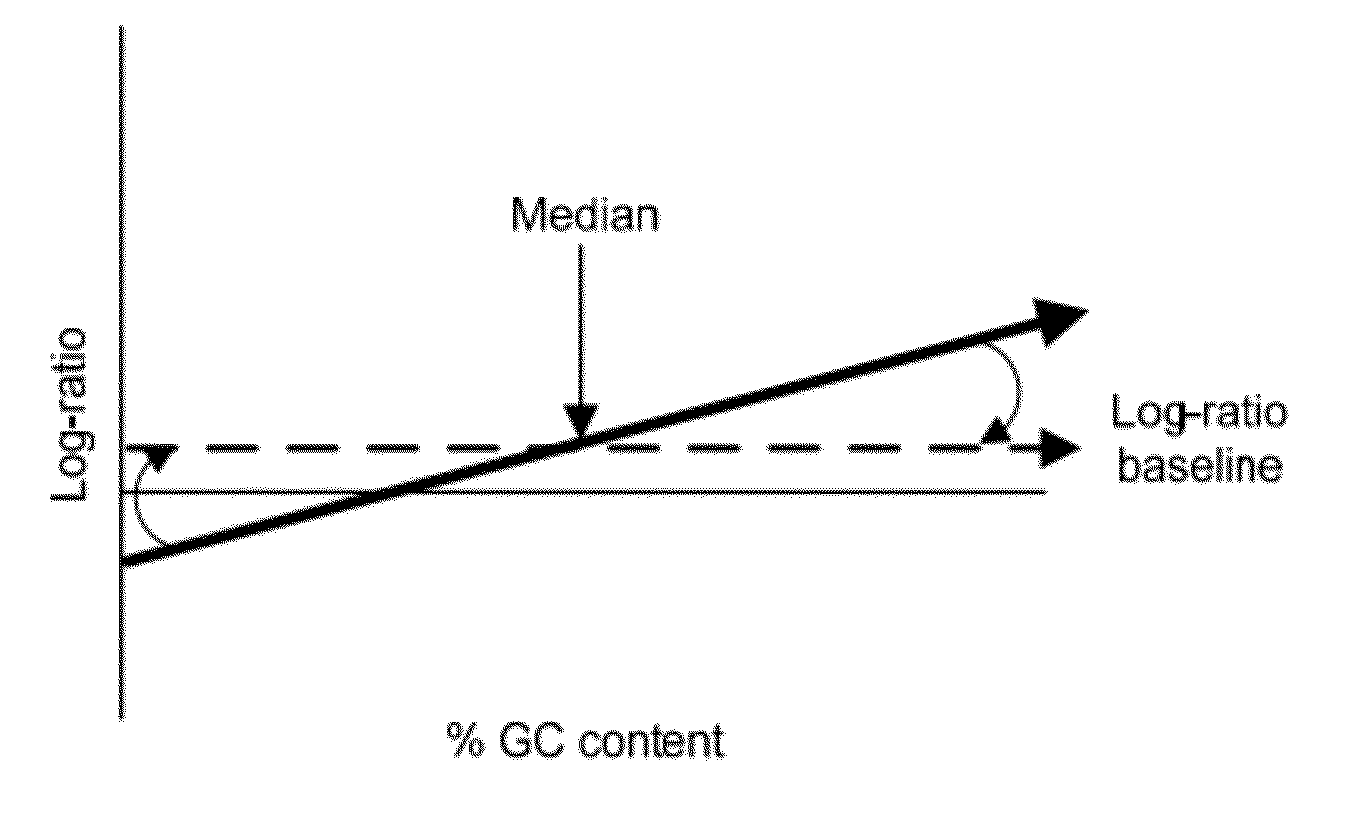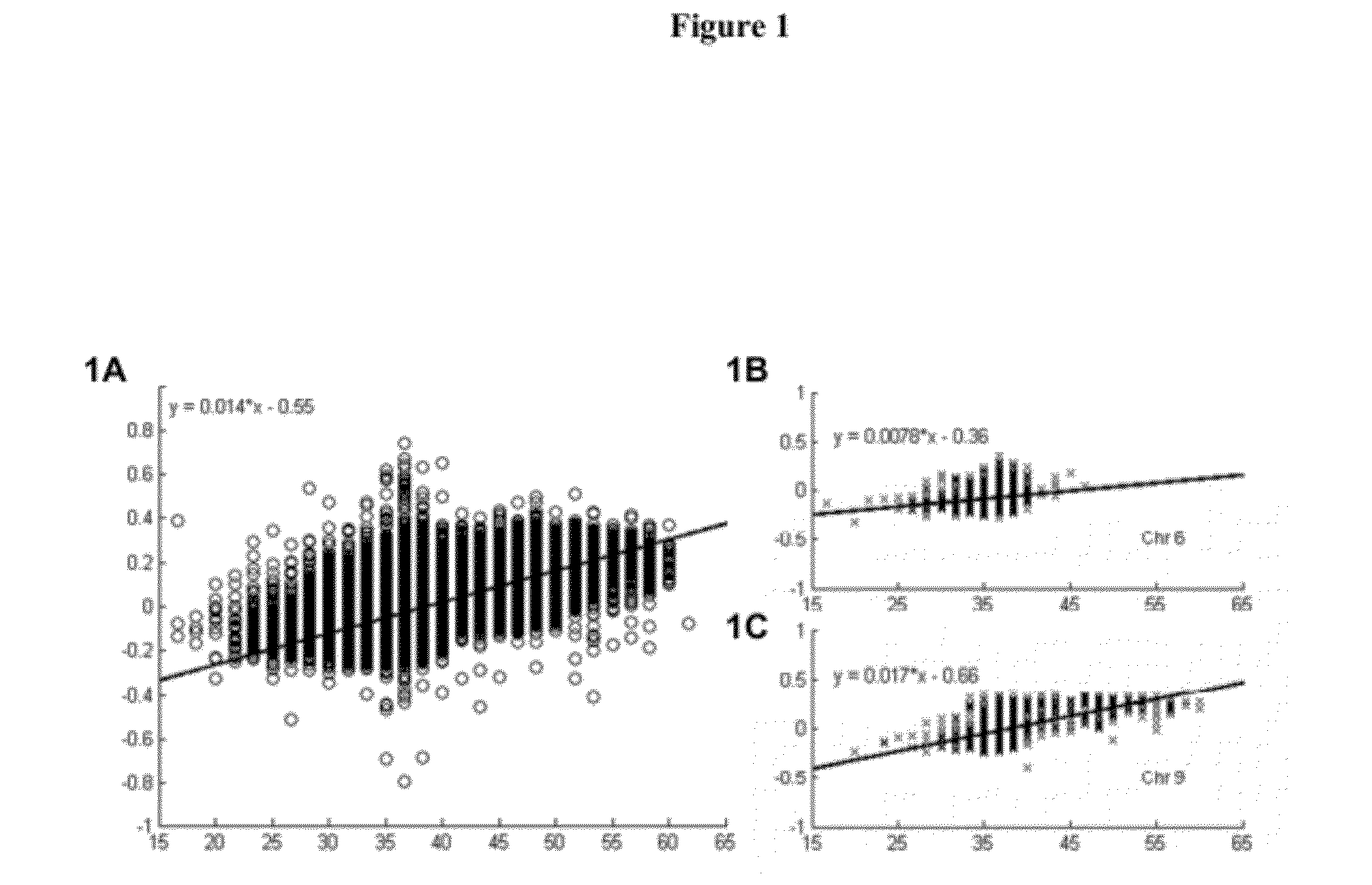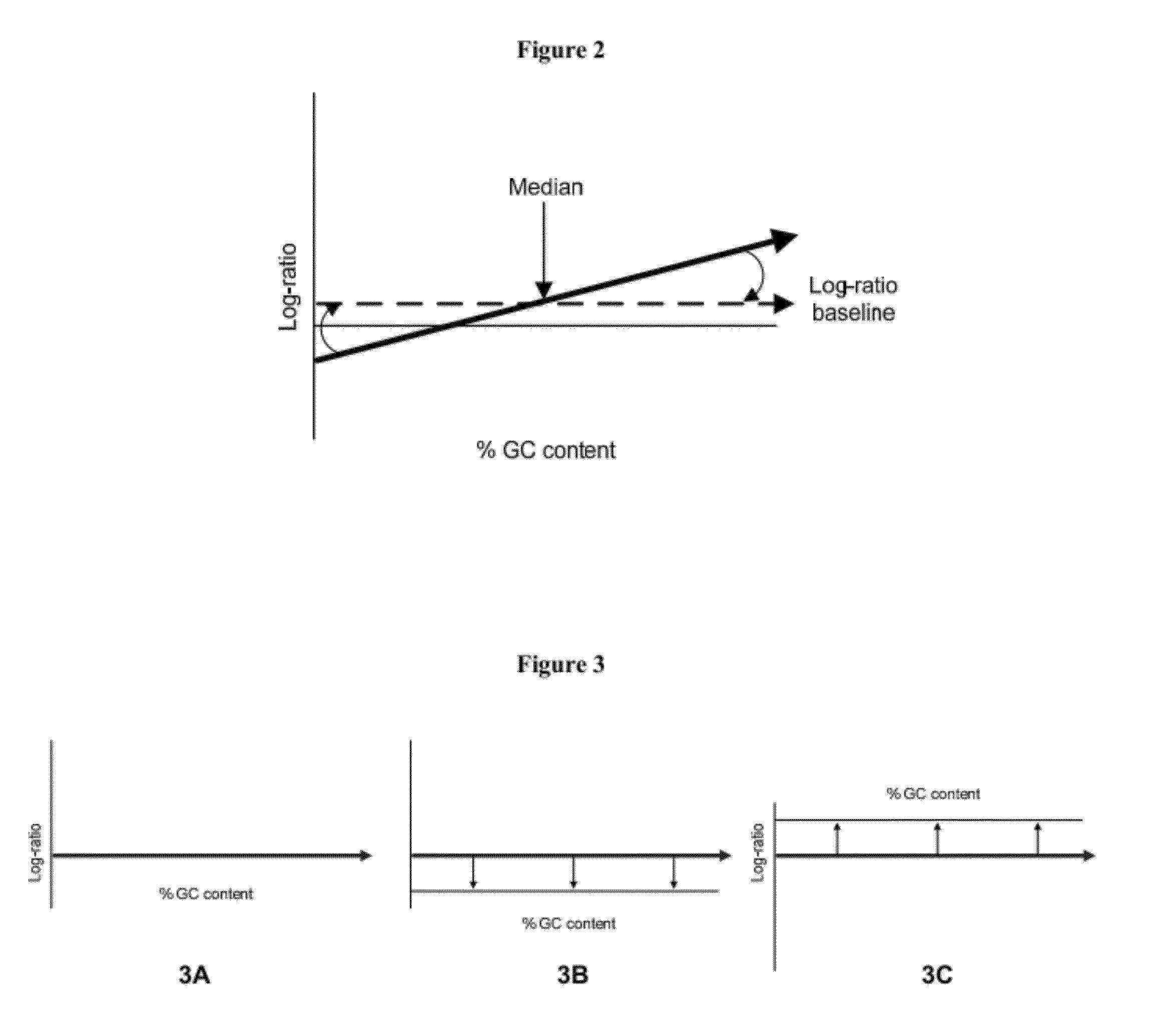GC Wave Correction for Array-Based Comparative Genomic Hybridization
a comparative genomic and array-based technology, applied in the field of gc wave correction for array-based comparative genomic hybridization, can solve the problems of limited g-banded karyotyping protocols, fish cannot assess dna copy number aberrations, and significant limitations, so as to reduce false positives, increase the sensitivity of cgh-based diagnosis, and effectively correct the
- Summary
- Abstract
- Description
- Claims
- Application Information
AI Technical Summary
Benefits of technology
Problems solved by technology
Method used
Image
Examples
example 1
Array-Based Comparative Genomic Hybridization
[0147]Microarray-based CGH (aCGH) techniques have revolutionized the field of chromosomal structural variation detection. They are capable of higher resolution than karyotyping, FISH (fluorescence in situ hybridization), SKY (spectral karyotyping) and other techniques and are particularly useful for detection of copy number changes in genetic disorders. In this example, a 60-mer oligonucleotide array was synthesized in situ using inkjet technologies. This array was designed to cover the entire genome with greatly enhanced coverage at known clinically relevant regions. Clinical samples were tested for known microdeletion and / or microduplication syndromes, all subtelomeric and pericentromeric regions, and other clinically significant genomic imbalances covered by the array.
[0148]The array was 4×44K format; that is, there were 4 arrays per slide with approximately 44,000 probes per array. (In another embodiment, the results of which are show...
example 2
Selection of Anchor Chromosomes
[0164]In this example, a set of anchor chromosomes were determined based on archived log ratio values from 27 historical samples obtained using a pre-determined platform and under predetermined assay conditions. Specifically, data from 27 samples run under the same conditions were extracted and GC correction was performed using the algorithm described above. For each sample, the median log ratio of each chromosome after correction was recorded. Table 4 shows GC corrected median log ratio values for 22 autosomal chromosomes from 27 samples.
TABLE 4Exemplary GC corrected median log ratio valuesSampleChr 1Chr 2Chr 3Chr 4Chr 5Chr 6Chr 7Chr 8Chr 9Chr 10Chr 111−0.00514−0.00484−0.0093−0.0157−0.00949−0.00553−0.00936−0.0077−0.00184−0.00212−0.002562−0.00898−0.02096−0.03315−0.04359−0.03631−0.0333−0.01527−0.0259−0.01102−0.0039−0.006763−0.01361−0.02939−0.04415−0.05731−0.04593−0.05084−0.01928−0.03381−0.00869−0.00419−0.008754−0.00654−0.021−0.0337−0.03271−0.04378−0.035...
example 3
Determination of Anchor Values
[0166]To derive chromosomal adjustment values, anchor values were first calculated for the anchor chromosomes chosen in Example 2. As described above, the anchor value a1 for a particular anchor chromosome j was determined by comparing the median log ratios of anchor chromosome j to the median log ratios of the “most skewed” anchor chromosome, i.e., the anchor chromosome whose median log ratio was most skewed from 0. In this example, chromosome 19 was identified as the “most skewed” anchor chromosome. Median log ratio values (after correction) for a given anchor chromosome (e.g., chromosome 3) were then plotted against the median log ratio values of chromosome 19 for the 27 samples. The anchor value for the given chromosome (e.g., chromosome 3) was then defined as the slope of the trend line (calculated using robust regression) from the datasets. This process was repeated for all other anchor chromosomes to obtain the set of anchor values. The anchor va...
PUM
| Property | Measurement | Unit |
|---|---|---|
| threshold | aaaaa | aaaaa |
Abstract
Description
Claims
Application Information
 Login to View More
Login to View More - R&D
- Intellectual Property
- Life Sciences
- Materials
- Tech Scout
- Unparalleled Data Quality
- Higher Quality Content
- 60% Fewer Hallucinations
Browse by: Latest US Patents, China's latest patents, Technical Efficacy Thesaurus, Application Domain, Technology Topic, Popular Technical Reports.
© 2025 PatSnap. All rights reserved.Legal|Privacy policy|Modern Slavery Act Transparency Statement|Sitemap|About US| Contact US: help@patsnap.com



